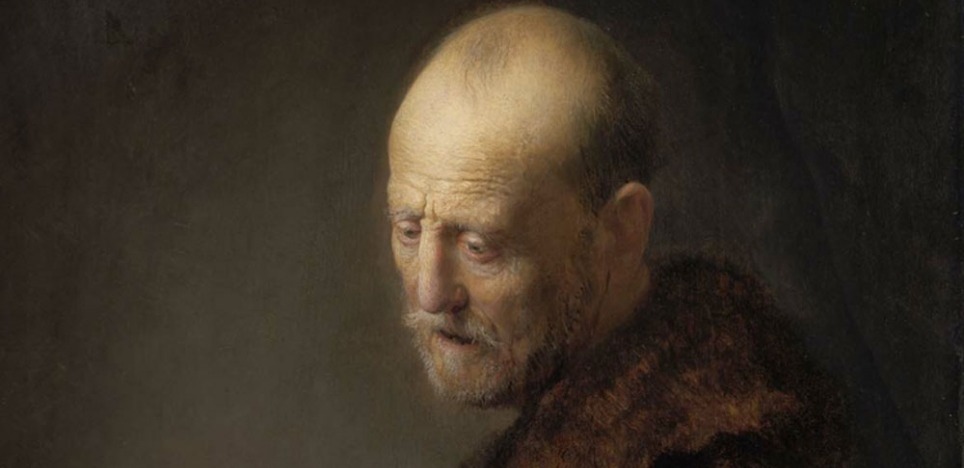The seventeenth-century painter Rembrandt was not a conventional Christian, but he did many paintings based on the Bible and religious themes. He also was fascinated with older men and women. The faces of the long-lived people in his portraits are beautiful in their own ways, seemingly unashamed to show the marks of time. We sense in their visages a mixture of vulnerability and surprise at their still being among us.
There are many different types of prayer in Christianity. In formal congregational prayers, we confess our sins and ask for forgiveness; we join with others to praise God through litanies and chants. We also pray when we ponder the Scriptures and other sacred texts. Our personal informal prayers express our gratitude for all that we have been given and also ask for God's help for ourselves and others in times of trouble. But perhaps the deepest kind of prayer is wordless union with God.
That is what we see in Rembrandt's Old Man in Prayer. The first thing that strikes us is that the subject is an elderly man. His furrowed brow and downcast eyes suggest that he has suffered and comes to this moment with some trepidation. There is sadness in his face.
But his stance also suggests humility in the presence of God. His head is slightly bowed, and he holds his hand over his heart. He is gently protecting what is most precious to him – his heart, his spiritual center, the doorway to God, the receptacle of divine grace. That gesture, the right hand held over the heart, is one we see often in Sufi circles. It is used when greeting brothers and sisters on the path as an acknowledgement of our connection heart to heart. And it is assumed during prayer. Gazing at the old man in prayer, we find ourselves joining him in this bodily act of union with God. We do not need words.
